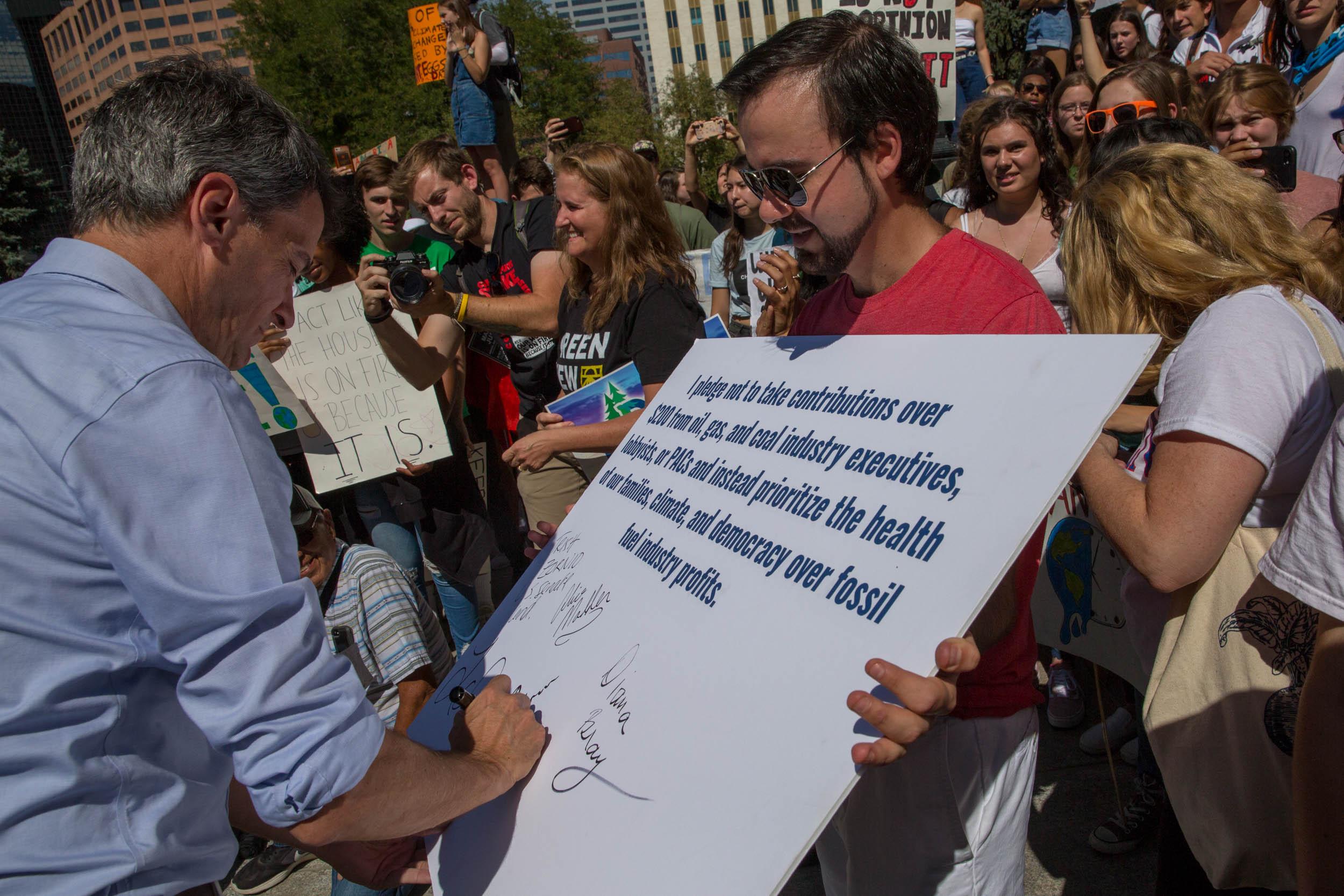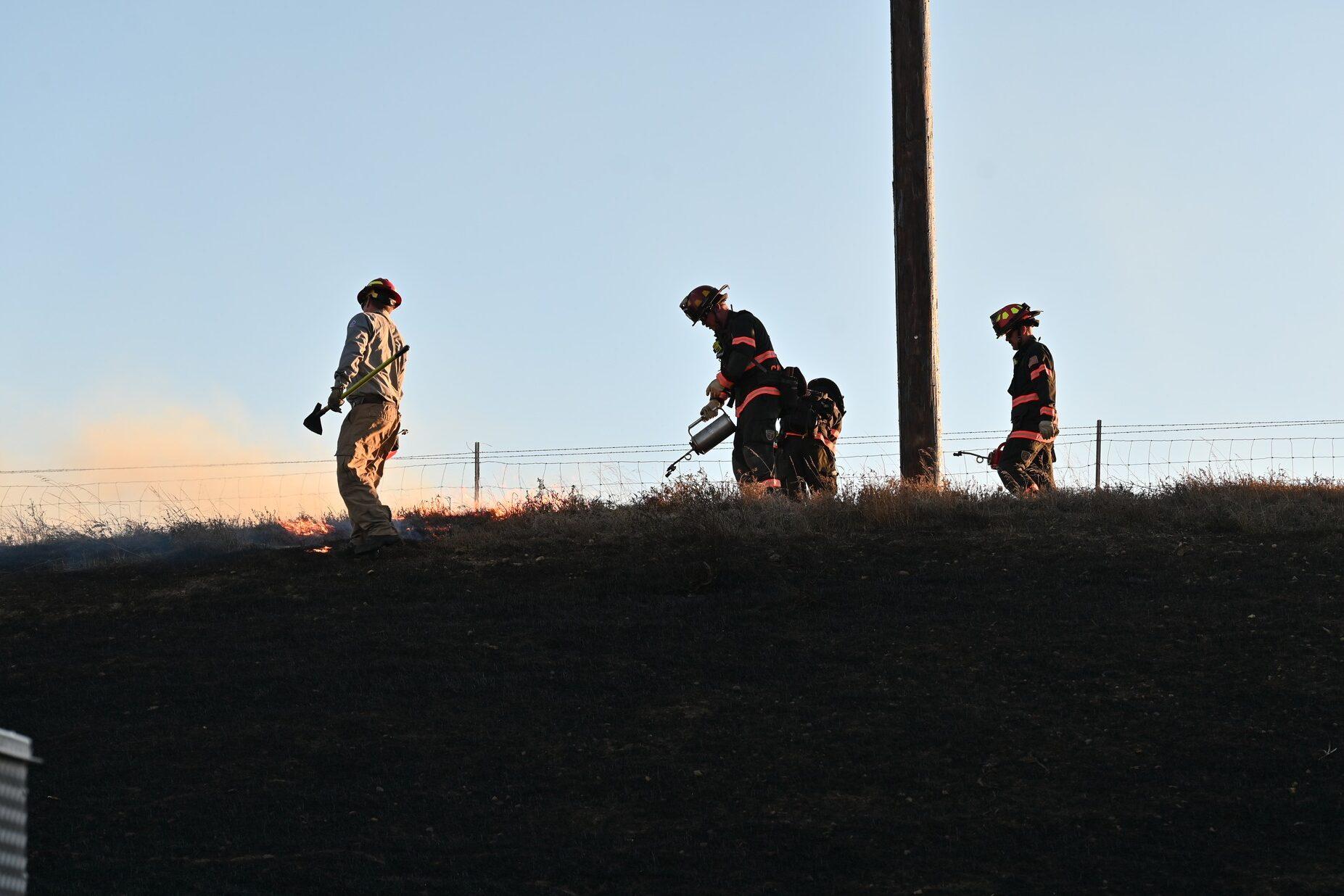
At some point in the not so distant future, a young girl in Colorado Springs can’t go outside.
The temperature is 127 degrees Fahrenheit. Her father wears a hazmat suit and a gas mask as he builds a roof from emergency blankets. Her pregnant mother slams a radio crackling with warnings of massive tornadoes and dangerous air. Her parents argue until breathless in their makeshift shelter, trapped in a terrible future ravaged by climate change.
“I just hope we can see the sunshine again one day,” she narrates.
This bleak scene isn’t the opening of a new Mad Max movie. It’s the hellscape Democrat Andrew Romanoff imagines in his first U.S. Senate campaign video, "Home." The former state House speaker is betting a progressive stance on climate change can help him overcome a wide Democratic primary field — including former Governor John Hickenlooper — and defeat Republican U.S. Senator Cory Gardner next November.
“The point of the spot is to say, 'This is what lies ahead and, by the way, this is reality for a lot of folks on Earth today,'” Romanoff said.
The 4-minute ad will run on major social media platforms. His team plans to spend $1,000 promoting the video on Facebook and YouTube. It won’t run as a television spot, according to the campaign.
The video, produced by WIN, is the latest test of whether left-wing candidates can capitalize politically on growing concerns about climate change.
In his Senate campaign, Romanoff has embraced the so-called Green New Deal and in turn earned the endorsement of the Sunrise Movement, a youth climate group advocating for the aggressive action on climate change. Meanwhile, Hickenlooper, who’s far outpacing Romanoff in Democratic primary polls, has written an op-ed criticizing the platform. His climate plan focuses more on market-based solutions, like collecting a carbon tax and redistributing it to consumers.
The new ad puts the difference in the most dramatic terms possible. It ends with Romanoff taking direct aim at critics of more aggressive climate action: “Those who say it cannot be done should not interrupt those who are already doing it.”
Max Boykoff, an associate professor at the University of Colorado Boulder and author of the recently published book "Creative (Climate) Communications," said the new strategy comes with risks and benefits for Romanoff. Its success will likely depend on the audience. It could gain attention from people already worried about the issue, but more moderate voters could be turned off.
“Scholarship has shown that, with this kind of approach, you can raise awareness and creep people out, but it can also paralyze and alienate people,” said Boykoff.
The accuracy of the “cli-fi” future depicted in the ad is another question. The radio news brief claims a temperature high of 127 degrees Fahrenheit in Colorado Springs at some point in the “not so distant future.” One study found Colorado will experience more record highs than lows as the average temperature warms, but the heat in the ad is way up there. Colorado’s current high temperature record is 115 degrees Fahrenheit set outside Las Animas in July.
Another creepy radio blast warns of a “heightened chance of large-scale tornadoes.” While some signs point to more tornadoes due to human-caused climate change, it remains a matter of scientific debate.
Other so-called “climate candidates” haven’t taken such a frightening tone. Washington Gov. Jay Inslee centered his presidential candidacy on the issue before dropping out last August. His campaign launch video sounds like a football coach rallying a team before the big game. Bernie Sanders likes to say “the future of the planet is at stake,” but he’s so far stopped short of depicting a future where it’s lost.
Romanoff said there isn’t some grand political calculus behind the ad. More than anything, he said it’s an attempt to force people to reckon with the climate crisis and illustrate the stakes.
“There’s plenty of smart people who try to distill the findings of the politics of this approach,” Romanoff said. “You could make your living analyzing the tea leaves. That’s just not the job I’m applying for.”
Editor's Note: Due to information provided by a source, an earlier version of this story incorrectly identified the company behind the creation of the Romanoff ad.









